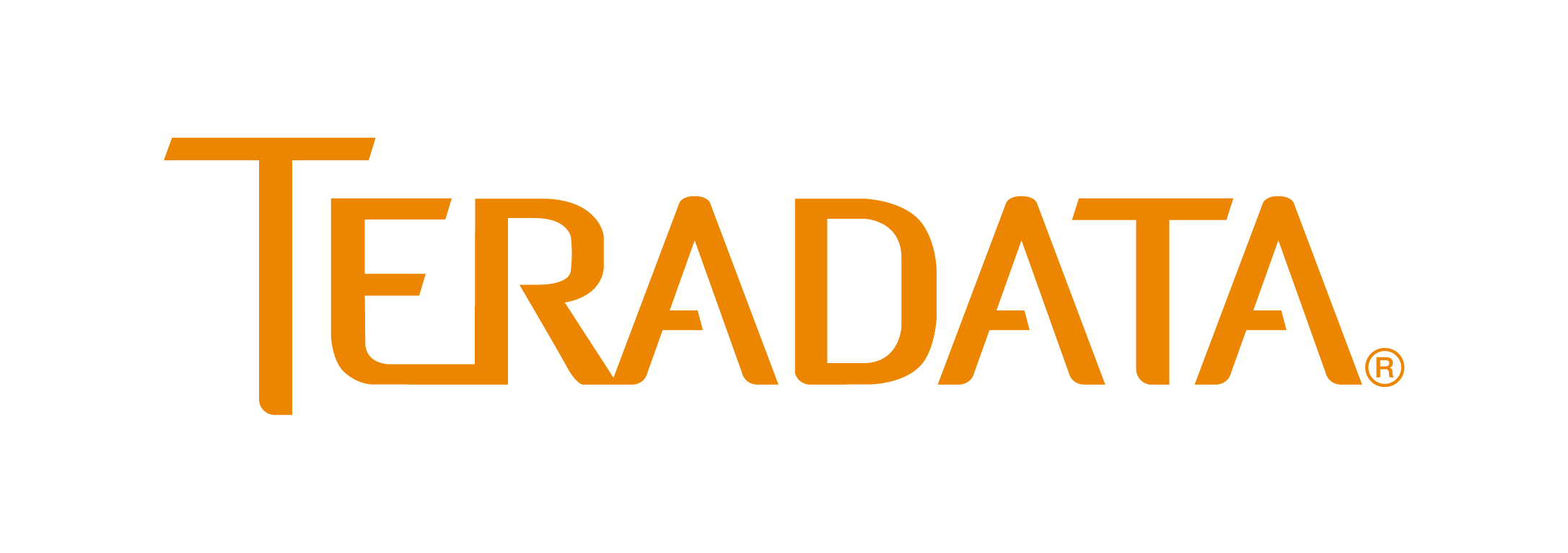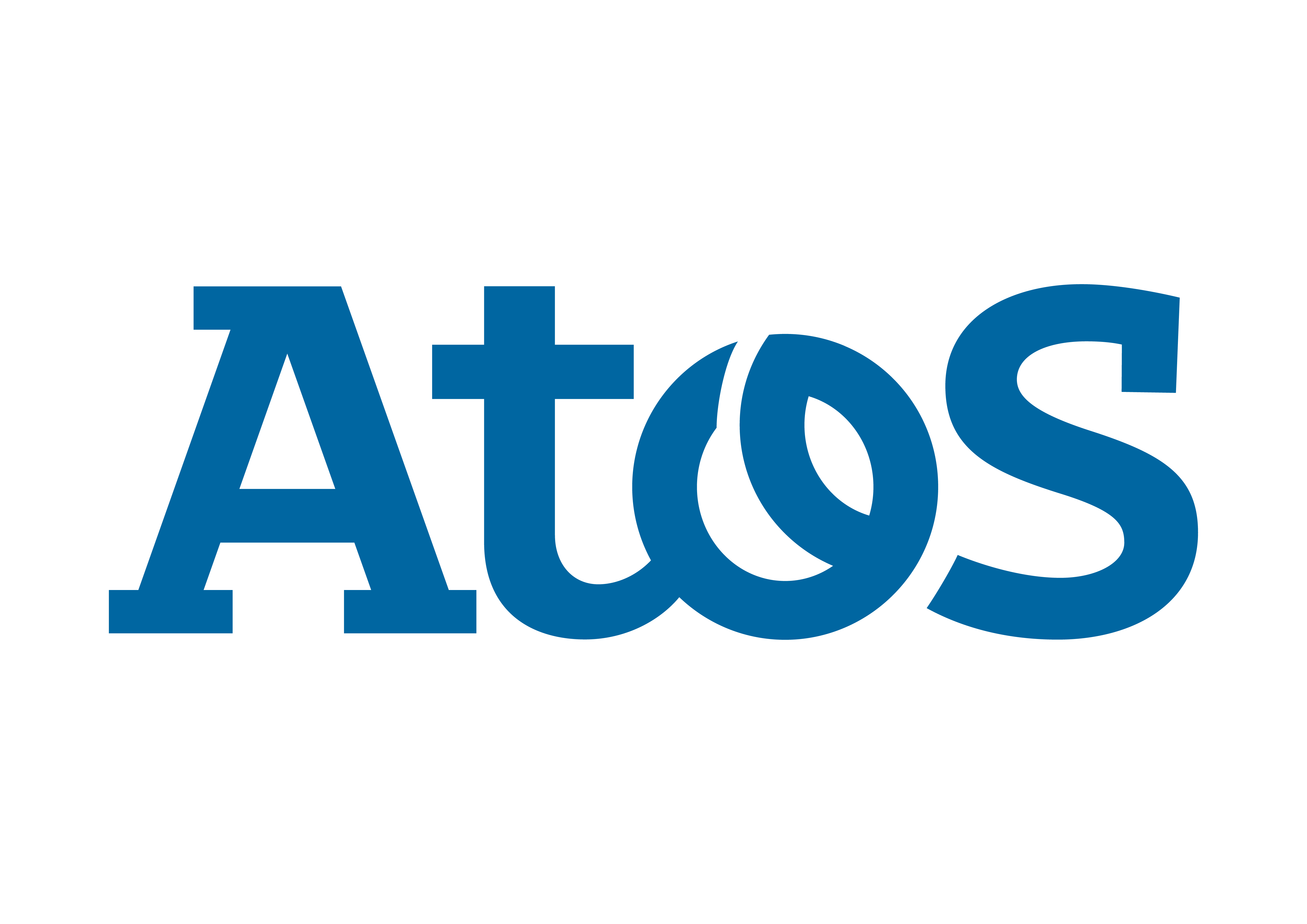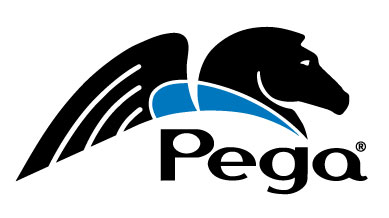
Keynote Presentations
| Steve Wozniak | |
| Apple Co-founder Chief Scientist, Primary Data |  |
A Conversation with Woz
A Conversation with Woz
The co-founder of Apple, Steve Wozniak, will share his experiences and view of the future in a “fireside chat” keynote. Steve Wozniak has helped shape the computer industry as he co-founded Apple in 1976. He is a legend within the computer industry and a great example of entrepreneurial success. He has gone from computer geek to cult icon. Steve will reflect on his childhood influences, founding Apple, his history with Disney and his perspectives on “game changing” technologies and the role analytics will play in shaping the future. The keynote will be an opportunity to hear Steve’s personal stories, his insights and ask him questions at the end.
| Rebecca Jarvis | |
| Chief Business, Technology & Economics Correspondent, ABC News |  |
No Limits: How to Build Your Team, Promote Your Brand, and Position Yourself for Success in a World Where the Only Constant is Change
No Limits: How to Build Your Team, Promote Your Brand, and Position Yourself for Success in a World Where the Only Constant is Change
With stories drawn from years of experience interviewing trail blazing founders, celebrities, and CEOs, Rebecca helps you understand how these game changers got to peak performance, and the strategies you can use to get there, too. Her presentation touches on everything from how to make tough decisions, to challenging convention, to overriding bad advice. With lessons from top leaders in the industry, she will show you how to think differently and live a limitless life.
| Brent Cooke | |
| VP of Loyalty, CRM & Marketing Insights, Petsmart |  |
| Carol Hinnant | |
| Sr. Vice President, National Television Sales, comScore |  |
| Kristin Sullivan-Stoesser | |
| VP, Sales, New Accounts, comScore |  |
Tuning in With Data: Learn How Big Data is Helping to Fine Tune a Retailer's TV Advertising Approach
Tuning in With Data: Learn How Big Data is Helping to Fine Tune a Retailer's TV Advertising Approach
More information coming soon!
Sr. Vice President, National Television Sales, comScore
VP, Sales, New Accounts, comScore
| Michael Linnington | |
| Chief Executive Officer, Wounded Warrior Project |  |
| I-Sah Hsieh | |
| Corporate Social Innovation Director, SAS |  |
Data for Good: How Wounded Warrior Project Is Finding the Beauty in Its Data
Data for Good: How Wounded Warrior Project Is Finding the Beauty in Its Data
Some people look at data and see numbers. Others look at numbers and see faces. At SAS, our passion for data and analytics finds a natural outlet in the Data for Good movement, which uses data in meaningful ways to solve humanitarian issues of poverty, health, human rights, education and the environment. One organization now using data to honor and empower veterans, service members and their families is Wounded Warrior Project. In this session, RET. Lieutenant General US Army and CEO of Wounded Warrior Project Michael Linnington will share how he leverages data to make leadership decisions, maximize resources and measure program impact. He’ll be joined by SAS Corporate Social Innovation Director I-Sah Hsieh, who will talk about SAS’ contributions and leadership in the Data for Good movement. Hsieh will also share how SAS’ passion for this movement resulted in the development of a crowdsourcing app called GatherIQ™. This app brings together the power of SAS software, the talents of everyday problem solvers and the lifesaving causes of nonprofits around the world.
| Arijit Sengupta | |
| Head of Einstein Discovery, Salesforce |  |
AI is the New BI: How Human-Machine Collaboration Leads to Better Business Results
AI is the New BI: How Human-Machine Collaboration Leads to Better Business Results
What are the next disruptions for analytics? What are the differences between augmented intelligence and artificial intelligence? How can a business user trust artificial intelligence? How will artificial intelligence and other recent trends affect you and your teams? And most importantly, how can you take advantage of the trends to understand your customers better and improve your business? Salesforce Head of Einstein Discovery Arijit Sengupta will answer those questions and more in this thought leadership keynote session.
| Janaki Kumar | |
| Vice President SAP Design Head of AppHaus Palo Alto SAP Labs, Palo Alto |  |
Drowning in Data, and Starving for Insight?
Drowning in Data, and Starving for Insight?
Businesses today are undergoing an accelerated pace of digital transformation and have access to exponentially more data than they ever did before. Yet simply having access to all this data is not enough to deliver business value. The magic happens when the insights from this data translate into better customer experience, and better business outcomes. At SAP, we use a process called Design Thinking to humanize technology. It’s a structured process of creativity and innovation to make sense of big data. Listen to stories from customer engagements of how we use design to find the story in your data.
Featured Presentations
| Justin Bauer | |
| VP of Product, Amplitude |  |
| Ely Liu | |
| Sr. Manager, Digital Analytics, Freeform Research, Disney | ABC Television Group |  |
Analytics Amplified
Analytics Amplified
Discuss the evolution of product and its future with Amplitude’s VP of Product, Justin Bauer. Learn how Disney’s Freeform transformed their product analytics with Amplitude. With Amplitude, Freeform was able to answer very difficult questions around user behavior quickly and at scale. Three key learnings on how Freeform gained: 1. Depth - granular insight into how users are consuming the product and why they come back 2. Speed - instant, self serve access to product data for everyone 3. Scale - ability to analyze millions of user actions in real time
| Steve Hammond | |
| Sr. Director, Adobe Marketing Cloud, Adobe |
Applying Analytics Across Experiences
Applying Analytics Across Experiences
How to use Analytics as a fuel. This session will look at examples of applying the data and analytics outputs outside of reporting and for use in fueling engaging customer experiences across multiple touchpoints. Steve Hammond leads Adobe’s strategy for connecting technologies through data to drive value and experiences based on connected data, content, and decisions. Join us for examples and discussions of Applying Analytics Across Experiences.
Sr. Director, Adobe Marketing Cloud, Adobe
| Maj. Jill Wisniewski | |
| Major, West Point Department of Systems Engineering |  |
Architecting Analytic Capability for Open Source Intelligence
Architecting Analytic Capability for Open Source Intelligence
This study uses operations research and system design methods to identify and explore challenges in the development of the U.S. Army’s Open Source Intelligence (OSINT) capability. With increasing operational demand for OSINT products, the Army has developed tools, techniques, and analytic cells designed to collect, process, and analyze open-source and publicly available information. However, perpetual changes in web environments and associated technologies calls for an OSINT architecture that is technologically and organizationally responsive, allowing its analytic capability to withstand asynchronous rates of advancement in technologies and cope with unpredictable interdependencies at the product level. The results of this study provide design insights for the organization of people, information flows, and infrastructure that enable OSINT production.
| Peter MacKenzie | |
| Services Director, Artificial Intelligence, Teradata |  |
Artificial Intelligence & Deep Learning
Artificial Intelligence & Deep Learning
Artificial Intelligence is the next wave of digital disruption and early adopters are already realizing significant benefits. Companies need to act now to understand how they can harness the recent progress in Deep Learning, which is being driven by the explosion of digital data, advancements in hardware and breakthroughs in machine learning and neural nets. Peter will talk about the key capabilities companies need to develop to successfully leverage AI in the enterprise and how AI is transforming the way companies interact and manage customer experiences.
| Scott Fought | |
| Experience Insights Data Services Manager, Walt Disney Parks & Resorts |  |
| John Muscardin | |
| Principal Database Administrator, Walt Disney Attractions Technology, Walt Disney Parks & Resorts |  |
| Cait Rahm-Wynne | |
| Lead Database Administrator, Walt Disney Attractions Technology, Walt Disney Parks & Resorts |  |
Better Data Science Through Better SQL
Better Data Science Through Better SQL
Data is a critical ingredient for a diverse set of roles in the modern organization. New titles such as “data scientist” and “data engineer” reinforce that companies are putting a heavy emphasis on extracting the greatest value from their data assets. Are your queries keeping pace with the increasing volumes and velocity of your new data sources? What if you could get at the answers you need hundreds of times faster, simply by writing your data pipeline code a little differently? This session will demonstrate techniques to reduce your query runtime and stay under your DBA’s radar. We will use examples and methods that can be applied with different flavors of SQL and databases. Whether you are a SQL novice or expert, use Tableau, SAS or NodeJS to execute your code, you will learn something to enhance your data science skills in this session.
Principal Database Administrator, Walt Disney Attractions Technology, Walt Disney Parks & Resorts
Lead Database Administrator, Walt Disney Attractions Technology, Walt Disney Parks & Resorts
| Samuel Kou | |
| Professor of Statistics, Harvard University |  |
Big Data, Internet and Disease Detection: A Statistical Adventure
Big Data, Internet and Disease Detection: A Statistical Adventure
Big data collected from the Internet have generated significant interests in industry, government agencies and academia. They bring great potential in tracking and predicting massive social, economic and public health events. However, if the data analytics are not done properly, they could lead to misleading, embarrassing or entirely wrong conclusions. We focus on tracking disease epidemics using Internet search data in this talk. We will discuss the promise and fallacies of some of the early attempts, and their social, media and scientific implications. We will propose a new model that utilizes publicly available online search data to estimate disease epidemics. Our model outperforms all previous real-time tracking models for influenza epidemics at the US national level. An extended version of the model gives accurate tracking of Dengue fever in Asian and South American countries. We will also draw some lessons for big data applications and big data analytics.
Building the Future with Weak Signals: Going Beyond Social Listening Into Human Understanding
Building the Future with Weak Signals: Going Beyond Social Listening Into Human Understanding
Beneath the ocean of social media data, there are faint beacons that reveal hidden opportunities for new products, partnerships, and ways of expanding market share. These weak signals come from conversations representing a multi-dimensional, longitudinal view of human behavior. We live in a connected culture where these conversations and social exchanges are a powerful driving force. Keeping up with the speed at which human preferences change requires new ways of absorbing, connecting, and synthesizing the vast social data available to us. Sparks Grove and Shareablee will provide insights into how you can leverage social data for meaningful action and impact to influence human behavior. While you still can't predict the future, learning to interpret the signals lets you build it instead.
| Stephan Mandt | |
| Research Scientist, Disney Research |  |
| Leonid Sigal | |
| Sr. Research Scientist, Disney Research |  |
Deep Learning, Far Reaching: An Introduction
Deep Learning, Far Reaching: An Introduction
In this talk, we give an introduction to the fields of machine learning and deep learning. After a brief introduction to machine learning, we focus on the popular subfield of deep learning. We introduce and discuss basic concepts such as convolutional neural networks and the back-propagation algorithm. First, we focus on supervised deep learning. We give examples of how deep learning for activity recognition, emotion recognition, and object detection can be used to automatically extracting metadata from large video databases. We also discuss challenges that stem from the need for large labeled datasets, necessitated by supervised deep learning algorithms. We then move to unsupervised deep learning; the field that attempts to use the power of neural networks in setups where close to no labeled data exists. After a brief overview of approximate Bayesian inference, we discuss the variational autoencoder as the perhaps most basic unsupervised deep learning architecture. We close by showing how extensions of variational autoencoders can be used in the context of analyzing audience reactions to movies.
Sr. Research Scientist, Disney Research
| Jay Samit | |
| Vice Chairman, Deloitte Digital, Deloitte |  |
Digital Reality & the Future of Out-of-Home Entertainment
Digital Reality & the Future of Out-of-Home Entertainment
In this session, Deloitte Digital Vice Chairman examines the impact of virtual, augmented and mixed reality on defining out-of-home entertainment. In the immediate future, theme parks, sports stadiums, museums, cruise ships and tourist attractions around the globe will provide a new level of personalized encounters unlike anything enjoyed today. By highlighting some of the latest advances in hardware and network technologies, Samit will share insights as to how these tools can be harnessed to create truly magical experiences.
| Chris Barton | |
| Director Emerging Platforms Research, ESPN |  |
| Ricky Cedrone | |
| Assoc. Director, Advertising & Marketing Intelligence, ESPN |  |
Getting Ready for Game Time: A New Approach to Promo Optimization
Getting Ready for Game Time: A New Approach to Promo Optimization
ESPN utilizes media mix modeling to help inform promotional strategy for its biggest sports properties, navigating complex factors that include planning across multiple ESPN programs and networks (including ABC), different media platforms and types of creative, different fanbases for the teams playing, and more. This year, ESPN also tapped into its vast Fan Relationship Management (FRM) database of registered users to incorporate respondent-level digital promo exposure and behavioral data into TV promo and tune-in data from Nielsen’s TV panel, in order to produce the richest and most granular cross-platform media mix model for tune-in that the network has ever had access to. Please join as the ESPN Advertising & Marketing Intelligence team details this innovative methodology, the actionable insights applied to the promo planning strategy, and potential future applications of this new cross-platform ecosystem.
Assoc. Director, Advertising & Marketing Intelligence, ESPN
| Cara Dienes | |
| Consulting Director, Decision Science, Walt Disney Parks & Resorts |  |
Ghost Analytics: Methods That Will Haunt You
Ghost Analytics: Methods That Will Haunt You
Don’t let unfamiliar techniques spook you! Mathematics can be an obstacle to access some advanced modeling methods, but the ideas alone can prove to be useful. Enjoy this math-free, conceptual overview of analytics techniques such as game theory, optimization, stochastic systems, and machine learning. Walk away with an understanding of methods that can change the way you think and will haunt you to learn more. There’s no turning back now!
| Dr. Jason Fischer | |
| Conservation Program Manager, Walt Disney Parks & Resorts |  |
| Dave MacLean | |
| IT Lead Architect, Walt Disney Attractions Technology, Walt Disney Parks & Resorts |  |
Identifying Interesting Events from Videos of Bird Nests
Identifying Interesting Events from Videos of Bird Nests
Studying video of birds can be a tedious exercise, yet necessary to learn their patterns of behavior: how they prepare a nest, how they care for eggs and hatchlings, and more. Using advanced video processing techniques and machine learning, computers can sift through hours of video and identify the key sections worth looking at. This presentation will describe how a computer learned to understand bird behavior to identify interesting events for the humans who study them.
IT Lead Architect, Walt Disney Attractions Technology, Walt Disney Parks & Resorts
| Eva Lee | |
| Professor & Director of Center for Operations Research in Medicine and Healthcare, Georgia Tech |  |
Innovation in Big Data Analytics
Innovation in Big Data Analytics
Risk and decision models and predictive analytics have long been cornerstones for advancement of business analytics in industrial, government, and military applications. In particular, multi-source data system modeling and big data analytics and technologies play an increasingly important role in modern business enterprise. Many problems arising in these domains can be formulated into mathematical models and can be analyzed using sophisticated optimization, decision analysis, and computational techniques. In this talk, we will share some of our successes in healthcare, defense, and service sector applications through innovation in predictive and big data analytics.

Professor & Director of Center for Operations Research in Medicine and Healthcare, Georgia Tech
| Maarten W. Bos | |
| Research Scientist, Disney Research |  |
Introduction to Behavioral Economics
Introduction to Behavioral Economics
Many people think they make their decisions rationally. They are wrong. People’s decisions are constantly influenced by things that are functionally irrelevant to the decision, leading them to behave irrationally. However, that does not mean that the observed behavior is random. Irrational behavior can be tested, modeled, and even created, and researchers’ efforts to do so has resulted in a field called Behavioral Economics. Some well-studied influences on behavior are: Loss aversion, framing and anchoring, priming, accessibility, overconfidence, attractiveness, and the list goes on. This talk outlines why we aren’t more rational, why many irrational behaviors make some sense, and how we can attempt to see through some of these influences. We will go through a series of relatable examples of irrational behavior, and potential applications for business.
| McKay Curtis | |
| Sr. Principal, Decision Science, Walt Disney Parks & Resorts |  |
Measuring the Unmeasurable
Measuring the Unmeasurable
Customer satisfaction. Brand appeal. Employee engagement. Product quality. User experience. Many important quantities in business settings are difficult or impossible to measure, because they are hard to define precisely. Yet measuring and monitoring these quantities can lead to better business decisions. In this presentation I will demonstrate how statistical models can be used to measure the unmeasurable by analyzing the political ideology of Supreme Court justices, team strength in college football, and subject-matter mastery in a college statistics course. I will discuss how these models are also applicable in business settings, so that you too can measure the unmeasurable.
| Adam Kocoloski | |
| Fellow & CTO, Analytics Platform & Cloud Data Services, IBM |  |
Offline First: Bringing Data & Analytics to the Edge
Offline First: Bringing Data & Analytics to the Edge
A movement is underway to bring data and analytics to the edge of the network, closer to end users. Called "Offline First," this approach makes the need for constant connectivity a thing of the past. Offline First enables insights at the source of the data, dramatically decreasing the amount of time it takes to make sense out of that data. Peer-to-peer technologies allow data scientists to preserve, archive, and share important data sets and reproducible results. An Offline First approach is being utilized to make apps faster and more responsive than their cloud-dependent counterparts, providing a consistent user experience whether a device has no connectivity, limited connectivity, or a strong 4G signal. The Offline First movement is touching everyone from independent developers working on visionary projects to large corporations like IBM and Google. People are even using Offline First to support hospitals in Africa, electric power grids in Haiti, and families in rural Alaska. Learn about and the community behind the Offline First movement and the people who are bringing data and analytics to the edge with a number of innovative technologies.
| David Dittmann | |
| Director Business Intelligence & Analytics |  |
Rapid Fire Analytics: Surviving the Disruption
Rapid Fire Analytics: Surviving the Disruption
What happens when advanced analytics not only disrupts your business models, but even your own analytics organization? Only the most agile survive. Analytics organizations are struggling to cope with the evolving business requirements that started with needing to only solve ad-hoc wicked problems and then added expectations of becoming C-Suite analytical story tellers that influence every decision in a company. Now analytics organizations are the decision-makers. During this session, we will discuss the underlying causes of the large disruptions we have seen in analytics, but also learn from new use cases where advanced analytics will help us thrive in the future.
| Brian Denker | |
| VP, Business Development and Customer Experience, zData Inc. |  |
| Steve Rudolph | |
| VP, Communications and Business Line, Pegasystems |  |
Ride the future: Operationalizing Insights with Predictive Maintenance
Ride the future: Operationalizing Insights with Predictive Maintenance
Everything breaks, whether it be animal, vegetable, or mineral. With the advent of big data, the internet of things (IoTs) and the exponential increase in computing power, organizations can leverage their data in a strategic manner with predictive results. Brian Denker, VP Business Development and Customer Experience at zData, will discuss a case study focusing on the merger of big data management and data science on one of Disney’s key attractions. Producing a scientific model that was uniquely calibrated for the collected data, Disney created a safer ride, with less downtime while increasing customer satisfaction. In an evolving marketplace, the customer-centric approach to all aspects of business changes the game, and allows for the opportunity to form a new IP lifecycle management. New approaches are required, like applying AI to customer engagement; focusing on outcomes, not just operational efficiency; and quickly reacting to marketplace change. Steve Rudolph, Vice-President, Global Business Lines for Communications, Media, Manufacturing and Hi-Tech at Pegasystems, will discuss the acceleration of business impact by applying AI, robotic and digital process automation.
| Ernie Baker | |
| President, Start to Finish PM, Inc. |  |
The 10 Things Projects Should Start With
The 10 Things Projects Should Start With
The day you always anticipated (dreaded?) has arrived. You’ve been asked to be part of a new project and you are determined to get off to a good start. Where do you begin? How can you be sure that you’re focusing on the right things and performing actions in your project’s (and your!) best interests? One study discovered that as many as 25% of projects that got in trouble were already in trouble during initiation. They were set up to fail! This presentation will present a checklist of 10 items you would want to consider as you start off any new project. Items such as Stakeholder management, Risk management, managing scope, team leadership and continuous improvement will all be addressed in this informative and interactive session.
| Bryson Gordon | |
| Executive Vice President, Advanced Advertising, Viacom |  |
| Jessica Wang | |
| Director of Product Marketing, Mixpanel |  |
The Attention Economy: Growing Audiences Through User Analytics
The Attention Economy: Growing Audiences Through User Analytics
In today's Attention Economy, there are many ways in which people fill their downtime and seek entertainment. And mobile apps, websites, and on-demand streaming services are quickly becoming the predominant platform and channels for companies to connect (and grow) their audiences. Product and user analytics allow teams to understand who their users are behind the screens to better target them with relevant advertising products while maximizing revenue and providing the best user experience possible. Find out how Mixpanel and Viacom approach these problems and learn more about the tactics available to accomplish your revenue and product development goals.
| Dr. Andy Hines | |
| Assistant Professor & Program Coordinator, University of Houston |  |
The Role of Data in Exploring the Future
The Role of Data in Exploring the Future
Foresight aims to help leaders make more informed decisions about the future in the present. This presentation explains the role and potential uses of data at various stages of foresight work as it aids future-oriented decisions. It will briefly look at how the use of data has changed, and focus on its current status and how it might evolve.
| BJ Price | |
| Analytics & Optimization Manager, CIMA, Walt Disney Parks & Resorts |  |
| Daniel Rios-Doria | |
| Analytics & Optimization Manager, CIMA, Walt Disney Parks & Resorts |  |
| Nate Vadeboncoeur | |
| Manager, Advanced Analytics and Optimization, CIMA, Walt Disney Parks & Resorts |  |
Whipping Your Evil Data Into Wickedly Good Marketing Insights
Whipping Your Evil Data Into Wickedly Good Marketing Insights
As data demands increased, our team found it necessary to streamline processes and standardize code used to collect, validate and assemble data for modeling. This presentation is an update of our 2015 DDAC presentation on using Tableau to develop self-service visualization of modeling results. We will discuss how we use Git-Hub to standardize our methodology for collecting data, how we use Tableau for validation, and also how we use internal hack-a-thons to tame our villainous data.
Analytics & Optimization Manager, CIMA, Walt Disney Parks & Resorts
Manager, Advanced Analytics and Optimization, CIMA, Walt Disney Parks & Resorts
| Lisa Dracolakis | |
| Director, Consumer Insights, Disney Channels Worldwide, Disney | ABC Television Group |  |
| Irene Lane | |
| Vice President, Consumer Insights, Disney Channels Worldwide, Disney | ABC Television Group |  |
Young America: The Generation That Will Change Everything
Young America: The Generation That Will Change Everything
A distinctly different generation is emerging that will cause dramatic changes for decades to come. This group is being shaped by shifting FAMILY realities, the explosion of CREATIVITY and how that is defined, INTERSECTIONALITY of personas available to kids, and a comfort level with NEW FRONTIERS and global awareness. In an effort to understand the culture kids are co-creating, Disney Channels Worldwide Consumer Insights unveils this new proprietary research on the current state of 2-14 year olds in the US. Join us to learn how these themes are redefining the next generation of kids and families.

Director, Consumer Insights, Disney Channels Worldwide, Disney | ABC Television Group
Vice President, Consumer Insights, Disney Channels Worldwide, Disney | ABC Television Group

